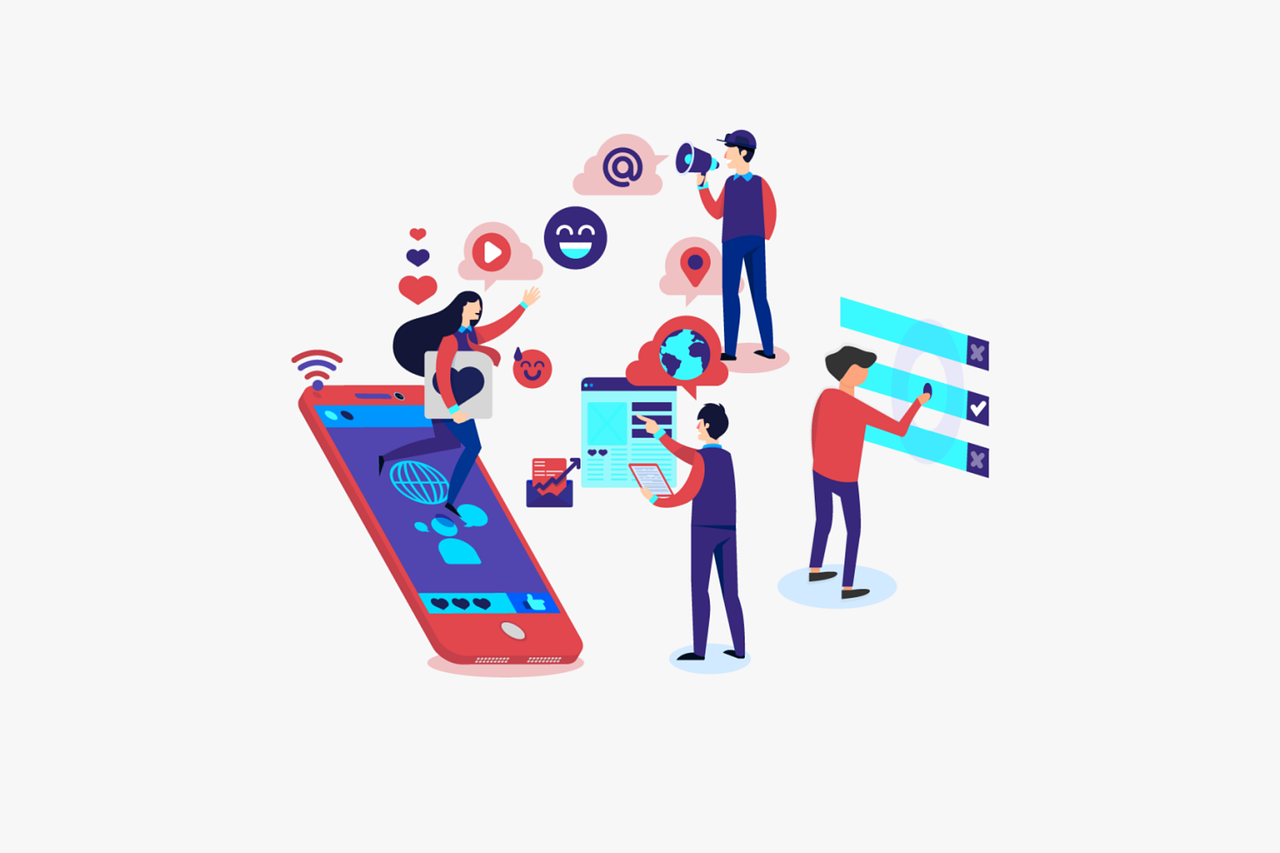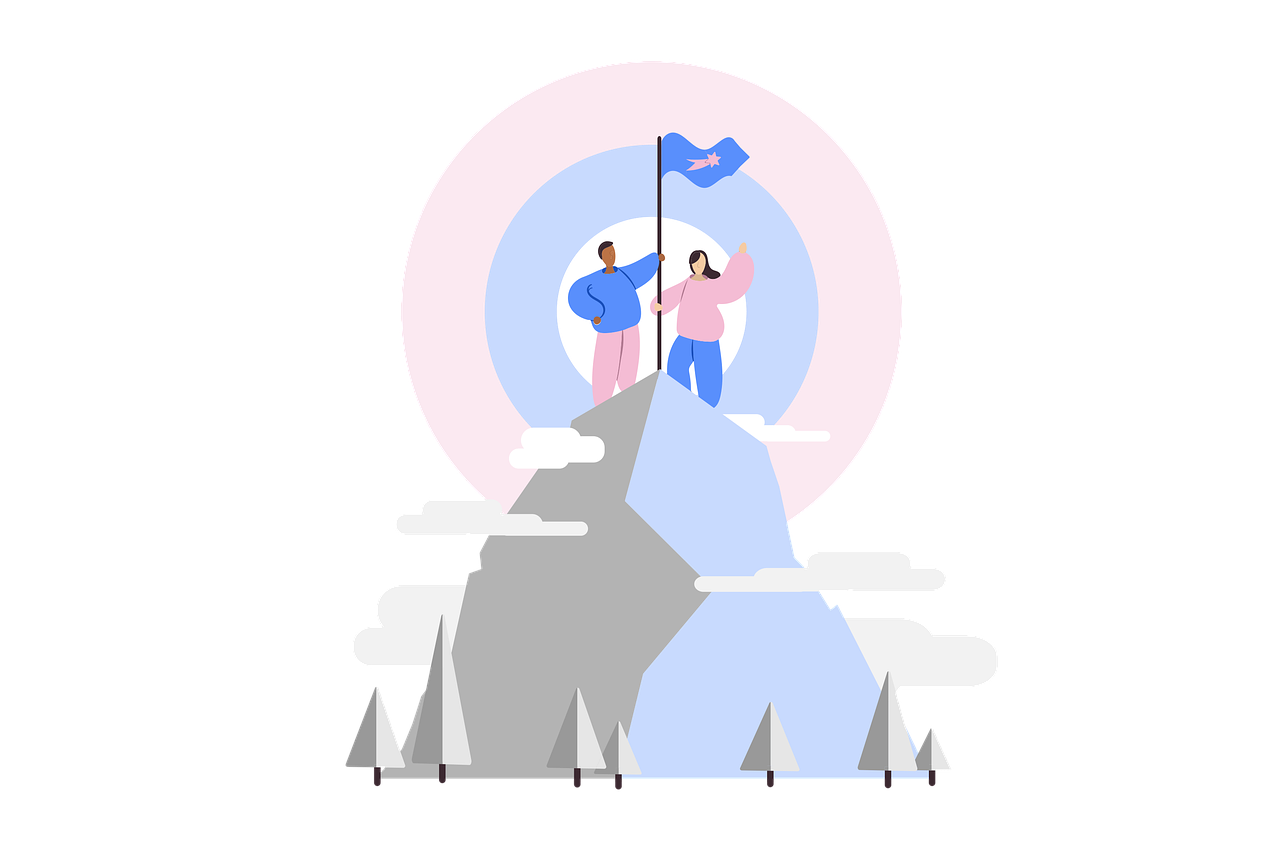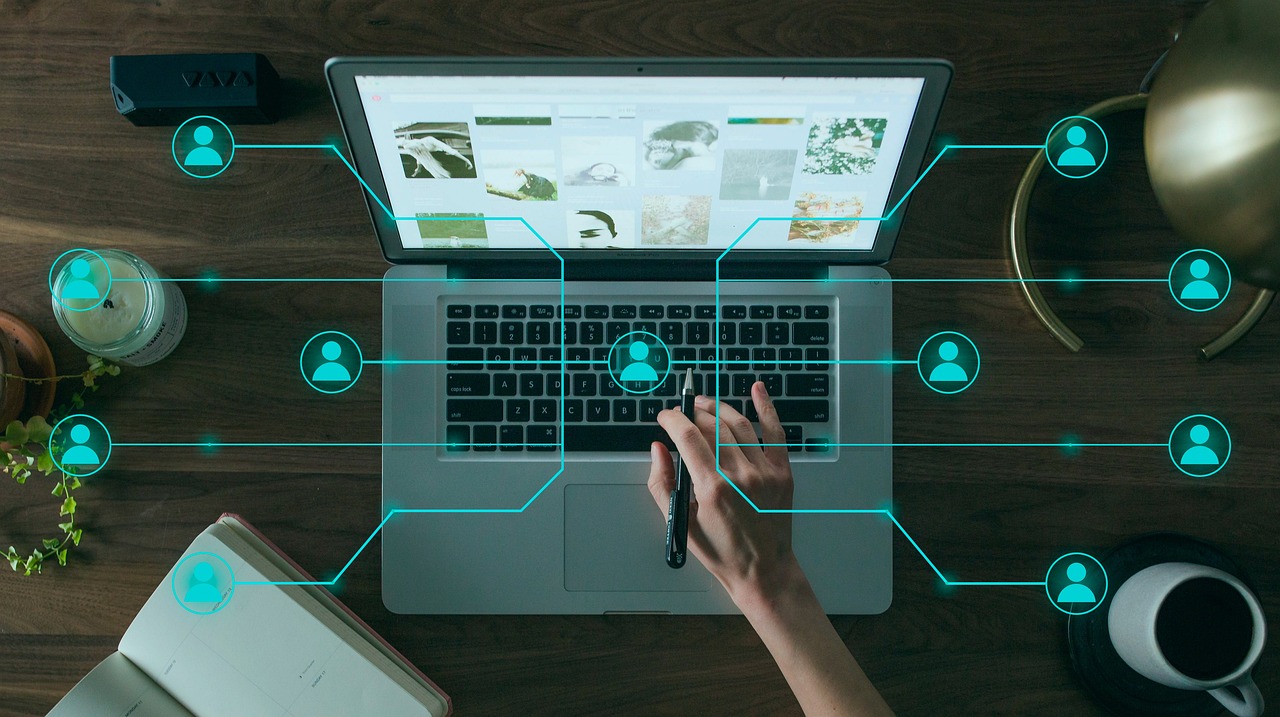12 min to read
Creating a seamless customer experience across all channels, including online, mobile, and in-store.

Omnichannel Marketing.
A brand experience should feel the same on all its channels, don't you think so?
Imagine that if you communicate with our brand through our website, the tone of voice is professional and friendly, but once you visit our LinkedIn, the posts or responses are curt and informal. That differs from the brand you spoke with; one is Codedesign, and the other is DesignCode. It's not a seamless experience, is it?
Preferably, every brand should feel like a "1"; that is, around all its departments and channels, people can experience the same brand experience in all of them. That makes your brand feel uniform, and if your customer service is excellent enough, people will always choose you over a brand whose brand experience feels like talking to James McVoy in the movie "Split" (and in case you don't get the reference to this film, here's a look at it)
Now omnichannel must go further; of course, we refer to the number of channels you can find your audience. According to a Harvard Business Review, customers spend 9% more on brands with 4+ media. Data analysis from Omnisend shows that marketers who used more than three channels to promote their campaigns achieved a 494% higher average order value.
The idea with Omnichannel is to be in the proper channels so you can reach customers wherever they are in their customer journey, and so some tracks ring in our minds when we talk about this strategy: Online, mobile and in-store.
So, to give your digital business the next upgrade it needs to succeed, we'll give you an entire article on how to apply an Omnichannel business model for your brand. If you want more help, contact experts in digital marketing.
What makes the Real Omnichannel Customer Experience?
A correct Omnichannel experience is one in which, from any channel your consumers contact you, they can have the same treatment and enjoy the same services. If they enter your social networks, the platforms will have the same style and communication management as when they email you directly. Nothing feels disconnected: All is one!
So, let's say you have an electronics store. A client who got your profile on Instagram and wanted to buy the PlayStation 5 that you have on sale from the Instagram profile clicked directly on the "Link in Bio" to buy the item. Here we see how the connection between social networks and your website, two of your most important online platforms, is well used, but let's put a problem in between.
When the order arrived, they did not send a PlayStation 5, but a 4 - an awkward mistake. Given this, the client will contact you by email to solve the issue. Suppose you have a good handle on the omnichannel model. In that case, your customer service will have the purchase data or history to solve the customer's problem as soon as possible and thus have an equally satisfying experience.
Ideally, the customer should be able to ask for help through any of your channels, be it Instagram DMs or even a direct call. Ideally, you can receive the same type of good treatment in any of these channels.
Omnichannel vs. Multichannel customer experiences.
Many terms in digital marketing are used interchangeably, but although they sound similar in idea, understanding them in greater depth helps you to know what you need.
We already know that the Omnichannel experience seeks to offer a unified communication experience in all of your brand's channels. To do this, usually, a communications team is in charge of keeping track of all customer interactions with the brand and thus be able to follow the case accordingly.
Now, we could define a multichannel experience as a decaffeinated Omnichannel; it loses part of its charm. Specifically, a multichannel model places your brand on several channels. Still, each one is managed by a different mindset. When communications occur, you usually begin to see the seams between gutters. Each time the customer is redirected to the next channel or representative to be attended to, they will have to re-discuss their entire conflict one more time, which ends up being exhausting for them in the end.
It is important to highlight how Covid forced brands to serve more effectively online. After this event, most customers expect online treatment to be just as satisfactory or even more so since we have continued to evolve.
With this in mind, let's see what factors make up an Omnichannel business model.

Omnichannel vs Multichannel.
What are the pillars of a successful Omnichannel Strategy?
Before going into the recommendations to build a successful Omnichannel Strategy for your digital business, we must know more about those elements that make it when we understand them and give customers what they want from our experience.
The pillars of this strategy are four which are:
- Sales: Sales are a significant aspect of your strategy. The most important thing here is to evaluate the channels your audience uses the most so you spend resources on the right places.
-
Marketing: Your marketing message must look the same on all your channels. When you create a unified marketing strategy, your customers will feel connected to your brand regardless of their track. If you want more help with digital marketing,
contact us. - Fulfillment and logistics: Order fulfillment is the most recommended way to get customers what they bought from your store. This aspect is essential for your overall omnichannel experience as it can reinforce your brand to a new level.
- Operations: Finally, your team needs to be on the same page and understand your brand's core values. In this way, whenever someone interacts with one of your team members, they'll broadcast your brand's personality and attitude. This is more or less like your experience when visiting a Disney Park. You feel everyone is in a "magical world" because most of them understand the message of the whole brand and embrace it while working there.
How to create a seamless Omnichannel customer experience?
With the bases of what this strategy represents, let's see the steps and tips you must follow to implement this strategy in all your channels, including online, mobile and in your store.
Understand your customers.
This tip should not surprise you since it is in almost all marketing guides, but it is good to frame that this is one of the pillars of good marketing in general.
As brands, sometimes we have a vision of what customers want. By describing them in buyer personas or associating them with close friends from our social circle, we already understand their needs and how they act when looking for your products. And although all entrepreneurs have an excellent hawk's eye when it comes to knowing how to run a business, it is always better to talk and communicate with our audience to find out what they want and how they look for it.
First, you can analyze your data to find out what is working and enhance it and what is not, or improve it or discard it permanently. Among the metrics and aspects that you should evaluate are:
- Most popular pages on your website.
- Reactions to your products
- Reviews
- Social media conversion metrics
- Sales by the device (Mobile Vs Desktop)
Then, another strategy to receive more accurate and valuable information for your business growth is to send surveys in which you ask the audience what they want from your business and how they have discovered you to see what channels you should focus on.
This is a base for your plan, but let's continue with another very important one.
Build a customer journey map.
However, unlike a standard map with only one path to reach the destination, this map offers several parallel ways to achieve the same destination.
In other words, customers can find you in any of your digital marketing channels or campaigns, and the idea is that from each of these different points, they can intuitively go to the next step to complete their purchase.
At each stage of your journey, you must ensure that the guidelines of your brand's experience are met and have a qualified customer service team that can answer questions or other inconveniences as soon as possible. Having this mind, you will ask yourself, how do I build a map? Well, although each customer process is different, there are a series of steps that all these journeys usually complete, and these are:
- Awareness: The customer learns about your products by recommending or seeing an ad from your online campaigns.
- Consideration: The customer looks at your products and evaluates their quality, price, and other factors. Remember that during this phase, they may be looking at other competitors, so your offer must stand out in some way compared to others.
- Purchase: The customer picked you as the most reliable option and purchased.
- Retention: Now that they bought something from you, it's time to build a relationship, so they want to buy more. Once they receive the product, it should be essential to contact them to ask if they liked it and also offer other offerings so they can get cached up by your good customer experience.
- Advocacy: Finally, if the whole experience was as good as expected, you can be sure they will recommend your products whenever someone asks them. Even more, if they can leave a good review or make a video reaction to your products, this is useful to keep taking your brand to other groups.

Customer journey.
Be consistent with communication.
Your communication style should be the same in all your presentations: captions, emails, direct messages and even a script for a YouTube video.
Now, to communicate in the same way, it is optional for everyone to share the same brain or be clones of the other. This is impossible, but if you and your workers understand your brand's personality, they will know how to communicate with your style.
This ranges from aspects as simple as associating characteristics to your brand, such as "youth," "educational," and "business," among any other features you want.
This can go even further by creating a style manual that helps your employees understand how to communicate, what words and abbreviations they should or should not use, and other information about the style you want to convey to your audience.
All this aspect of personality goes much further when we talk about your design, which goes from the logo to the colors you choose for your brand. If you want to learn about the importance of color in your presentation, check out our article on color psychology.
If you want to learn much more about building your brand's personality, look at our article on how to get the "why" of your business and how to create your brand's storytelling.
Focus on the branding on every channel.
After consistent communication comes everything related to branding, which is the other complement to your brand's personality. Branding refers to the entire visual section of your brand that goes from its logo, slogan, marketing and other things.
The idea is that branding is always present in each communication or interaction to demonstrate the unification of everything and that people feel they are talking to a real business.
There is nothing more unsatisfactory than receiving an email from a plain brand, without design or anything, just simple writing, and that's it.
People are not speaking directly to you as an individual but to the brand, and for this reason, it must have some representative of your branding, such as the logo on one side or an email template that is unique to your company.

Branding.
Be on Mobile: Everyone is in it!
Since its invention, we didn't think we could do practically everything with our phones. Sometimes we have the image that when we talk about digital businesses or marketing, everything has to do with desktops or laptops, but just grab your phone and look for the same article you're reading right - if you aren't already reading through it.
Today mobile is a huge part of giving a whole Omnichannel experience, and if your site doesn't display on mobile or even has an app for its users, you're missing a lot of sales. Think With Google informs that 70% of smartphone users who bought something in a store first used their phones to research information about that purchase. It's more comfortable for users to look for products or services through their phones. Just think about it. It's all at the touch of their hands.
Besides, a fun fact about mobile marketing is that, according to Google, 35% of people who searched on their phones spent more than they expected in the store. When we look at these statistics, optimizing your online store for mobile devices is necessary.
And if you want to take the Omnichannel experience even further, you can launch a mobile-friendly app for your business.
As soon as customers subscribe to it, you can give them new offers or send exciting information about your brand, so you keep building a customer relationship with them.
Personalize the customer experience.
People want to be treated as something other than a whole mass, but more like individuals. It's not just in politics, but it also happens in marketing.
Before social media, mass media communications decided which brands, products and even music we consume. We tend to like things more because they are everywhere, and we can't escape them. Fortunately, nowadays, algorithms allow us to teach them what we want first, and then, they deliver similar things to us. Today, people choose what to consume, and brands must adapt it.
SmarterHq informs that 72% of consumers only engage with personalized marketing messages. This is a whole part of omnichannel since when we recommend to users what they want, they feel listened to and that we care about their unique preferences.
Luckily software and algorithms are built to evaluate customers and then deliver the things or offers they want. You can use techniques like email retargeting or product recommendations to do this task better.
If you want more information on personalizing campaigns and overall marketing, read this article.
Use Social Media Platforms as a second base operation.
Social Media is the second or even first place to evaluate how people react to your brand and get instant feedback.
And as we said in this article, the idea is that, on every social media platform you are on, customers feel that the experience is the same, meaning:
- A similar tone of voice
- Posts that talk about the same topics
- Same branding and design
- Customer service is all in for any doubt or comment.
Make sure to include links to every other platform, website and even phone number so everything is connected on every social media you are in. But to make it even more convenient for them, you should include options or methods where they can buy right from the social media platform because sometimes going from one channel to another can be upsetting.

Social Media Omnichannel.
Include digital in-store experiences.
We specialize in digital marketing because we know how effective it is and that no business can survive without being present on digital platforms. However, even so, most customers still appreciate that you have a physical store, to which you can also add digital options to extend the Omnichannel experience to the outside world.
For example, let's put a clothing store.
Clothes are sold too easily through social networks or e-commerce; we know that, but this business niche can have a problem. A customer might see a shirt or shoe they love, check that it's supposed to be their size, and then buy it immediately without a second thought. When the order arrives and tries it on:
- The shoes, supposedly his size, are tight and super uncomfortable. They may be American number 8 but not European number 8. Resulting in a dissatisfied customer.
- In another case, the client receives the shirt they love, but when they try it on, he sees that they don't look as good as they wanted. It fits poorly or makes you look a little heavier. The result is another dissatisfied customer.
Although having a physical place can represent a somewhat high expense in principle, it is always a good idea to invest in it when you can since, although most things are done digitally, it is always better to see things face to face.
Also, this would be one of the most critical channels for all of us: face-to-face, human-to-human. We understand that in this way, negotiating or buying is much more accurate since the client sees and knows what he is buying at once.
Adding the digital part to your physical store can help shoppers show where stock is available in their local area with a where-to-buy solution or even give them the option to buy online and then pick it up in-store.
Final thoughts.
Omnichannel is like the late Oscar-winning movie: It is everything, everywhere and all at once.
The idea with implementing this type of strategy is that your brand experiences are more uniform and that it is a reliable entity to which people will always want to return.
Why do they always come back? Because you've taken it upon yourself to provide a seamless customer experience, no matter where users are in their journey, they know they can get the same good treatment and follow through with their cases in any inconvenience they may have.
Now, saying it just like that may sound complicated. Still, we must understand that technology came to make our lives easier, not the opposite. Fortunately, having tools to manage and evaluate your statistics will allow you to achieve the goal of being an omnichannel brand.
For tremendous success with the Omnichannel model, you need the help of digital marketing experts with years of experience in making all your clients achieve professional success online. For that, you can confidently contact us, and we will provide you with detailed and personalized advice at your convenience. Contact us so you can reach new professional frontiers!

About Bruno GavinoBruno Gavino is the CEO and partner of Codedesign, a digital marketing agency with a strong international presence. Based in Lisbon, Portugal, with offices in Boston, Singapore, and Manchester (UK) Codedesign has been recognized as one of the top interactive agencies and eCommerce agencies. Awarded Top B2B Company in Europe and Top B2C company in retail, Codedesign aims to foster personal relationships with clients and create a positive work environment for its team. He emphasizes the need for digital agencies to focus on data optimization and performance to meet the increasingly results-driven demands of clients. His experience in digital marketing, combined with a unique background that includes engineering and data, contributes to his effective and multifaceted leadership style. |

About CodedesignCodedesign is a digital marketing agency with a strong multicultural and international presence, offering expert services in digital marketing. Our digital agency in Lisbon, Boston, and Manchester enables us to provide market-ready strategies that suit a wide range of clients across the globe (both B2B and B2C). We specialize in creating impactful online experiences, focusing on making your digital presence strong and efficient. Our approach is straightforward and effective, ensuring that every client receives a personalized service that truly meets their needs. Our digital agency is committed to using the latest data and technology to help your business stand out. Whether you're looking to increase your online visibility, connect better with your audience, get more leads, or grow your online sales. For more information, read our Digital Strategy Blog or to start your journey with us, please feel free to contact us. |
CodeDesign is leading:
- Digital Agency
- Digital Marketing Agency
- Digital Ecommerce Agency
- Amazon Marketing Agency

Add comment ×